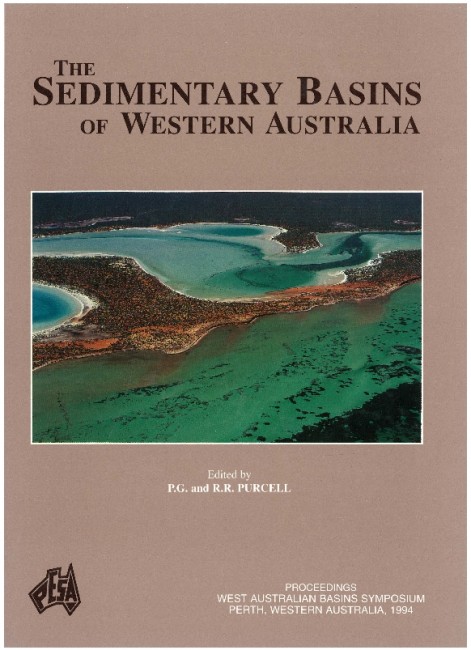Publication Name: The Sedimentary Basins of WA
Authors: Annette D. George, Phillip E. Playford and Christopher McA. Powell
Publication Volume: 1
Date Published: July 1994
Number of Pages: 23
Reference Type: Book Section
Abstract:
Carbonate breccias and coarse quartzo-feldspathic sandstones are conspicuous lithofacies within the marginal-slope succession of the Devonian Napier Range reef complex in the northern Canning Basin. Rigid application of sequence-stratigraphic models would lead to these breccias and sandstones being interpreted as lowstand deposits, however, their sedimentology and associations in which they occur allow alternative interpretations. We propose that tectonism and pulses of siliciclastic sediments, combined with relative sea-level changes, were important controls during evolution of the reef complex.At Dingo Gap, strata of the marginal slope abut the eroded Frasnian (Pillara) platform and provide an apparently continuous record of upper Frasnian to late Famennian slope sedimentation. Much of the succession represents deposition by sediment-gravity flows, although a large proportion of the late Frasnian basal breccias are talus accumulations. Very poorly sorted, clast-supported, matrix-bearing carbonate breccias are extensively developed on the middle parts of the slope, and are the products of highly viscous, granular debris flows. The very steep slopes (- 12-35 degrees) and excess pore pressures generated at the base of the flows aided mobility, and enabled the flows to attain sufficient velocity for the debris to be supported by dispersive pressure. Composition of the framework clasts is dominated by shallow-water limestones derived from the early-cemented reef and uppermost slope areas, admixed with variable amounts of bedded slope limestone incorporated during flow. The Dingo Gap debris flows were probably initiated in response to tectonic activity which triggered collapse of the platform margin.
Calcite-cemented quartzo-feldspathic turbiditic sandstones form a distinct unit within the carbonate succession, and are also commonly associated with the debris-flow deposits as discrete beds and lensoidal channel fills. A thick siliciclastic unit within the carbonate-dominated succession at Dingo Gap indicates a major change in sedimentation style and restricted carbonate production is inferred. In contrast, field and petrographic data from both the matrix-bearing breccias and intercalated sandstones suggest sedimentation on a slope adjacent to an actively growing and producing platform where conditions of rising sea level or relative highstand predominated.


